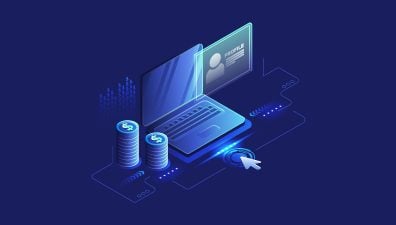Along with the rapid development of technology, mobile commerce, also known as mCommerce, emerges as a hot trend in eCommerce. Customers are more likely to get used to shopping online, from their comfort zone. eCommerce and mCommerce have interlinked relations with each other. While eCommerce serves the main function of selling and buying online, mCommerce is a subcategory of eCommerce that mainly focus on purchasing via mobile devices.
In this article today, we’ll understand more about eCommerce vs mCommerce and how they differentiate each other.
Let’s jump right in to get more information.
Table of Contents
What is eCommerce and mCommerce?
eCommerce
The internet’s emergence in the 1990s made a change in traditional commerce, which was followed a few years later by the development of eCommerce. This groundbreaking method of doing business allowed retailers to not only sell things in their stores but also to reach a larger audience, both locally and globally. Additionally, this kind of business also offered a wider range of products.
eCommerce is applied for selling and buying digital products, memberships, or services that are transacted over the Internet.
mCommerce
Mobile commerce (also known as mCommerce) is a business model that enables companies and individuals to deliver goods and services directly to buyers through non-handheld devices such as mobile phones, smartphones, or tablets.
This type of business is growing strongly on the global stage since it provides an instant connection between mobile users irrespective of their geographical location and time of day. What’s more, the demand for using wireless and mobile devices is increasing at a significant rate which means mobile commerce has the potential to reach various customers.
Generally speaking, mobile commerce is a natural progression of eCommerce.
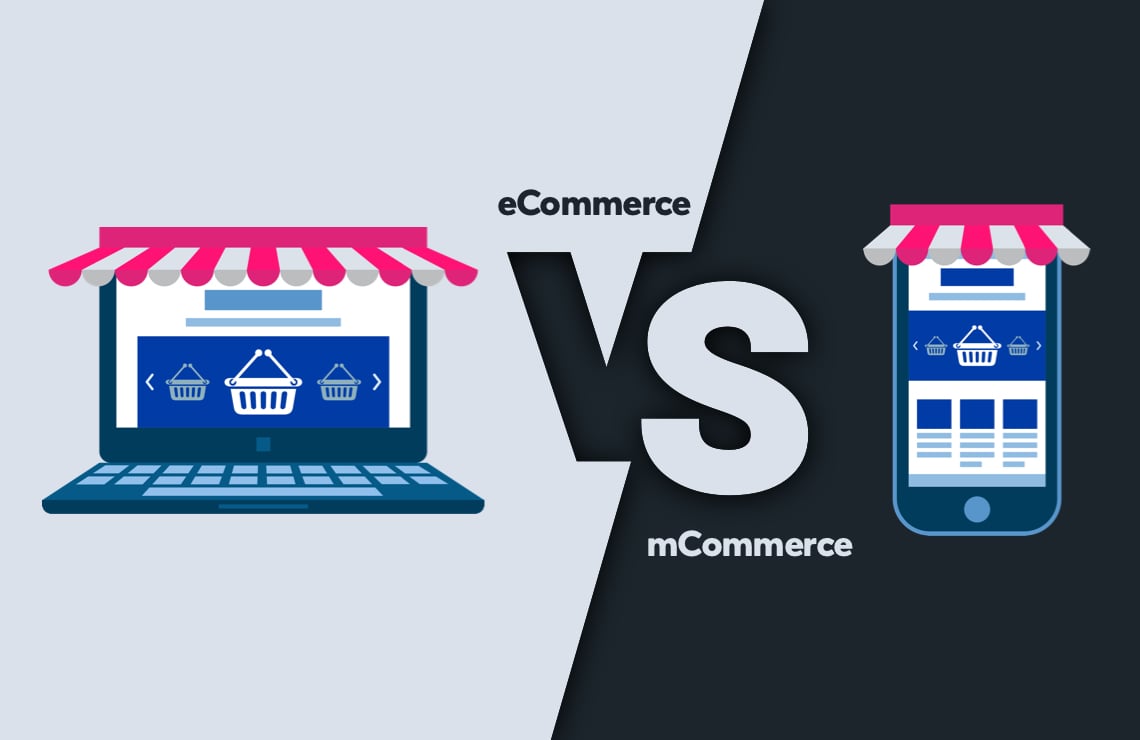
Online sales by mobile commerce in the US have been increasing at a decent rate over the past few years. According to recent statistics, mobile commerce sales make up 34.5% of total eCommerce sales in 2017. By 2021, it is anticipated that sales will account for 54% of total eCommerce sales. Obviously, mobile commerce is continuing to grow and is about to have a great impact on the market.
Types of mobile commerce
- Browsing for stuff online on your mobile: this type is concerned with internet shopping for groceries, daily necessities, and electronics. Dedicated apps, optimized websites, or even social media platforms such as Facebook or Instagram allow in-app purchases or store links.
- Purchasing app-delivery stuff: this type deals with services such as food shipping, car pick up, and others.
- Mobile banking: Mobile banking is a means of employing Internet techniques to gain access to a bank’s capabilities. Although several financial services organizations are currently experimenting with chatbots or messaging apps to give customer care, the transactions are completed through special apps built by apps.
- Mobile app payments: Google Pay or PayPal are the best examples of this type. It mainly focuses on making payment transactions through apps. Users will be required to register their credit or debit card and then use it whenever they want.
- Purchasing or renting digital content (Netflix, Spotify, etc) on a mobile device: Buying or renting online services is involved in this type.
- Mobile person-to-person payment: this type is known as sending money from one person to another, buying stuff, or sending it to someone who is in need. The transactions can be made by sending money to someone’s number or to their bank account directly.
eCommerce and mCommerce example
Amazon
Amazon is among the largest eCommerce retailers in the world. Starting as an online bookstore, Amazon expands dramatically and now offers a wide range of products from electronics, to clothing, and more.

Along with the success of its eCommerce site, Amazon introduced mCommerce, making purchasing journey easier than ever. The Amazon app provides a seamless mobile shopping experience along with a simple and functional UI/UX design, enabling users to shop, track orders, and receive personalized recommendations. Users can make purchases, manage their accounts, and take advantage of features like one-click ordering, barcode scanning, and voice-based shopping through Amazon’s virtual assistant, Alexa.
Walmart
Walmart is one of the top retail companies. Along with its wide physical presence around the globe, Walmart also established a strong online dominance with its robust eCommerce presence.
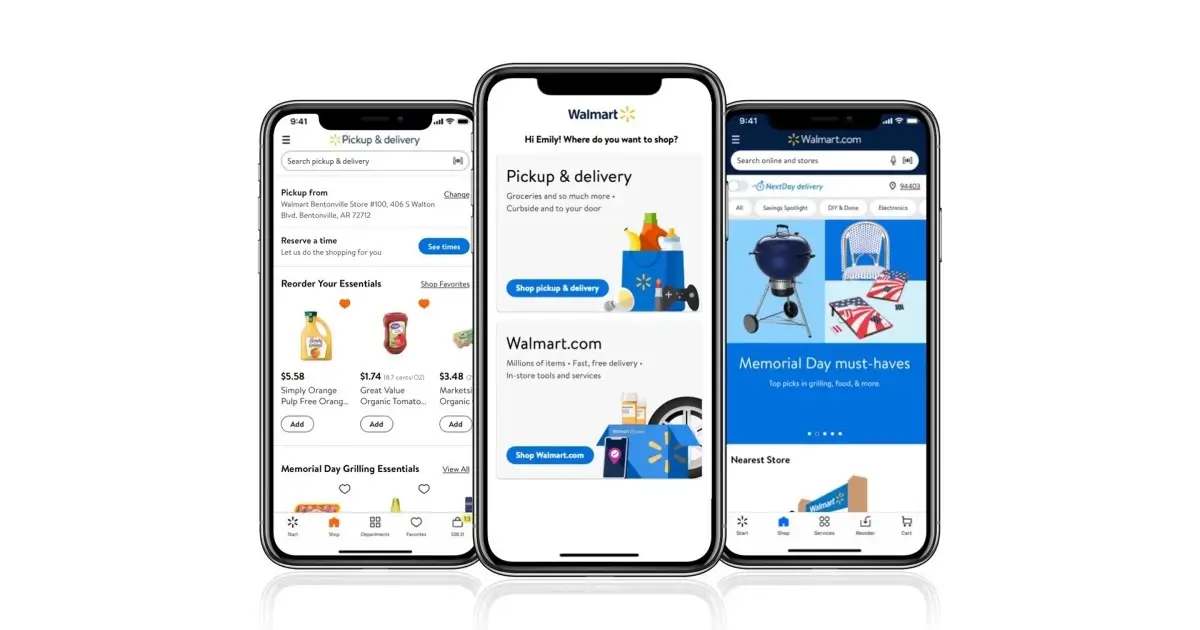
Walmart’s mobile eCommerce site was built to improve the user experience. The user interface is designed with a simple and easy-to-recognize color scheme, with plenty of room for further information about each product. Product photos and descriptions stand out on this mobile eCommerce site, while predictive text input is provided to simplify product search. The checkout process is also simplified. With this mobile-friendly design and usability, Walmart has successfully captured customers’ attention, resulting in increased conversions.
Differences Between eCommerce and mCommerce
Although both types facilitate online transactions and customer engagement, the difference between eCommerce and mCommerce is still apparent.
Mobility
This is the most notable difference between eCommerce and mCommerce. Traditionally, eCommerce functions are only limited to desktop computers or laptop devices. With the progression of mCommerce, its device compatibility expands to mobile devices, which come with greater convenience and mobility.
Thanks to the advanced development of mobile connectivity, security, and app development, retailers are allowed to offer services, products, and payments right over their mobile phones. Back in the good old days, customers had to open their desktop devices to shop online but with mobile commerce, things get easier as they only have to do it straight on their mobile phone. As long as there is an Internet connection and an Internet-ready device, customers are able to shop, browse, pay, bank, make a purchase, and many more things.
Today, the appearance of many mobile payment wallets such as Apple Pay or Airpay also gives customers the flexibility to make transactions on the spot.
Security
Security is an essential part of any transaction that is done through the Internet. Transactions at eCommerce platforms are often done by credit cards but this type of payment may put customer financial safety at risk as in 2018, it is estimated that credit card frauds increased by 18.5%. In addition, the security provided by a username and password of eCommerce accounts is not safe either. This results in customer reluctance when sending their personal credit card information over the Internet.
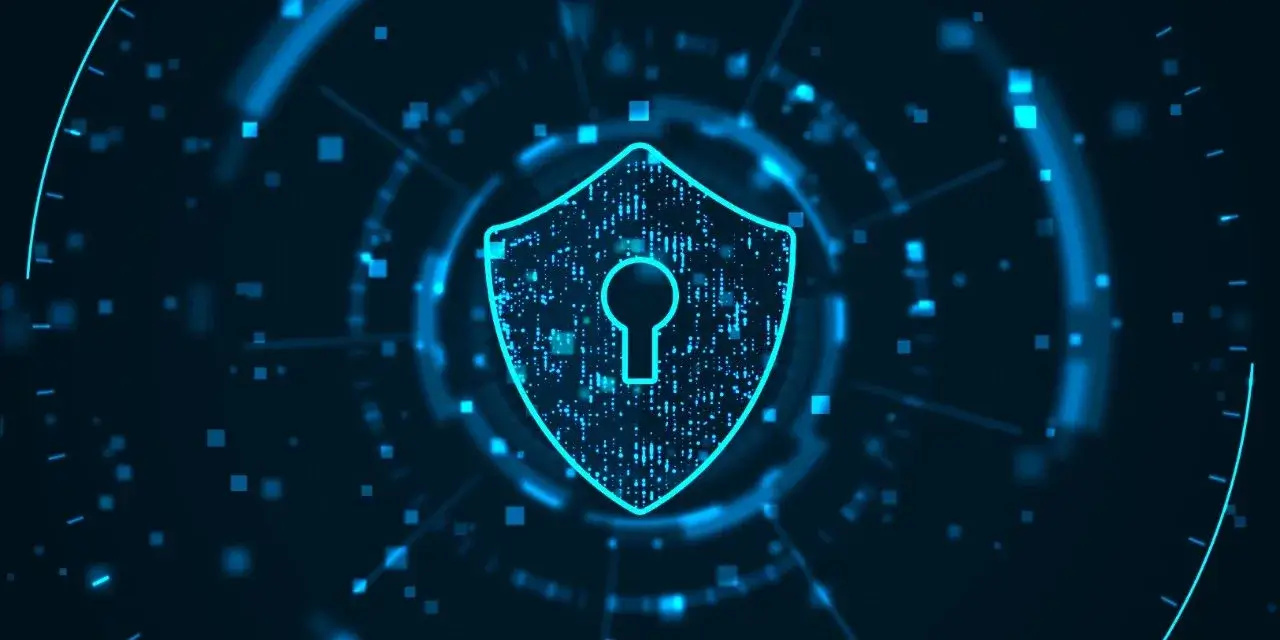
On the other hand, eCommerce comes with more extensive security capabilities. It offers additional authentication methods beyond traditional usernames and passwords. Biometric authentication, such as fingerprint recognition and facial scans, are common in mCommerce. Therefore, the possibility of leaking personal information may be lessened.
However, mCommerce involves a wide range of mobile devices with varying operating systems, screen sizes, and capabilities. It is important to note that this diversity makes it more challenging to ensure consistent security measures across all devices compared to eCommerce platforms designed for desktop browsers. mCommerce store owners still need to take a great concentrate on ensuring the security of mobile apps.
Location tracking
Location tracking is also a significant aspect that differentiates eCommerce and mCommerce. eCommerce may be unable to provide real-time location data due to its reliance on non-portable devices. eCommerce shoppers are tracked by the IP address on computers which gives a loose indication of the location of buyers and it is also limited in terms of locational advertising strategies. As a result, location-based personalization is less dynamic and immediate in eCommerce.
On the other hand, mobile commerce is a key player in the creation of location-specific content and personalized recommendations. mCommerce apps use GPS technology, Wifi, and other methods to track and identify buyer locations. When a user’s real-time location is determined, store owners can easily send customers location-based content and services such as finding nearby stores, navigation and directions to a physical store or a pickup location, offering discounts, promotions, or recommendations based on the user’s physical location, and so on.
Additional data, additional marketing
Another eCommerce and mCommerce difference is their accessibility to additional data and marketing touchpoints.
To track user behavior and engagement on websites, traditional eCommerce relies solely on web-based analytics. As a result, it has access to fewer data points than mCommerce. eCommerce data collection is also less immediate and more difficult to capture real-time insights.
mCommerce, on the other hand, allows for more device access, which leads to more potential for providing diverse and immediate data points. These are important factors for creating effective marketing strategies for brand growth. It does have the following advantages:
- Increase personalization: Once you receive more data, you have a better foundation on what your customers need and then give them what they want. As a result, if you give them a personalized shopping experience, they are more likely to be turned into potential customers and come back to your site to make a purchase.
- More marketing touchpoints: Mobile commerce allows your business to have another chance to impress customers; marketers can customize their mobile marketing to reassure that it gives consumers the best experience. The more times customers access your site, the higher possibility of getting more leads and sales.
- Increase loyalty and customer retention: Mobile commerce allows you to increase customer engagement by providing a new client touchpoint that can include exclusive benefits like mobile-only discounts, special prices for registered consumers, free shipping, and more.
Push notifications
Using push notifications is such a good way to communicate and reach the right customer at the right time. First, when push notifications appear on the site, it reminds customers about your brand and raises brand awareness. Besides, businesses are able to reach many new visitors and convert them into paying customers.
Although push notifications can be used on both eCommerce and mCommerce platforms and produce excellent results on both, their functions are more effective in mCommerce.

In traditional eCommerce, push notifications are often used as part of email marketing and retargeting strategies, focusing on driving users back to the website. To receive the notifications, users need to actively check their emails or log in to their accounts. As a result, the notifications are not always visible and emerging to customers, leading to lower open rates.
Utilizing mobile devices, mCommerce allows push notifications to appear directly on the user’s screen or in the notification center. This enables high visibility and immediate engagement with users. Combining with location-based content, mCommerce apps offer personalized push notifications based on user behavior, preferences, and purchase history. This creates more personal touch, which increases the chances of engagement and conversion.
Mobile commerce advantages
The advantages of eCommerce and mCommerce to businesses vary, but share the same benefit of facilitating the flexibility to adapt to changing consumer preferences and behaviors while delivering convenient and personalized shopping experiences to them. As a progressed version of eCommerce, mCommerce comes with new features as well as distinct benefits to online store owners. Here are some notable mobile commerce advantages.
Have better customer insights
mCommerce apps enable retailers to collect personalized data about their buyers. Mobile apps track customer data on their age, gender, location, and even their shopping history so it sets a firm foundation on how businesses will target their audience in a very effective way that boosts sales.
Customer shopping behaviors and patterns, frequency, and personas all contribute to the effort of enriching customer insight for your businesses. With personalized customer data, targeted marketing and localization strategies are made easier to implement, thereby improving customer engagement and loyalty.
Convenience
When the majority of people always have their mobile phones close at hand, engaging with users through mobile apps is an effective way for many eCommerce businesses to successfully capture customer attention.
With some touch on the screen, customers get it easily by browsing, swiping, and placing orders. They can comfortably shop anywhere and anytime since they don’t need to go to stores but stay at home, add products to their shopping carts, and access thousands of items from hundreds of retailers. Furthermore, with the introduction of digital wallets, mobile phone transactions are now easier than ever, allowing for quick and easy checkout experiences and adding to the convenience of mCommerce.
Improve shopping experience
The key element in business is to keep customers coming back constantly. Mobile commerce definitely knows how to enhance the customer experience to help businesses achieve this goal.

With a mobile-friendly interface, mCommerce platforms own a responsive design. Consumers can receive a familiar and optimized experience on their mobile screens. Mobile apps also leverage features such as touch gestures, swiping, and shaking, which allow for more intuitive and engaging interactions. This creates easy navigation and directions for customers throughout their buying journey.
mCommerce also enhances the shopping experience of customers through the use of personalized product listings and offers. Businesses can utilize a combination of mobile apps, analytics, and location information on a mobile commerce ecosystem. Chatbots and messenger apps are other tools that facilitate efficient communication between businesses and their customers using the platform that customers are already familiar with,
More efficient marketing campaigns
In eCommerce, to raise brand awareness and promote products, marketers have to spend a lot of money on ad placements. In contrast, spending on ads is reduced in mobile commerce through targeted and efficient marketing activities.
mCommerce enables greater access to personalized customer data and deeper insights, as well as real-time tracking. This feature allows your company to create highly targeted marketing plans, ensuring that your ads reach the most relevant audience segments and potentially increasing conversion rates. In the meantime, better targeting can help you save money on ads for uninterested or irrelevant audiences.
While saving ad budget, mCommerce store owners are also able to make direct connections with customers through mobile apps or push notifications. This facilitates efficient retargeting strategies, increasing the likelihood of conversion.
Mobile commerce disadvantages
Connectivity issue
The biggest obstacle for mCommerce or any kind of eCommerce is the Internet connection issue. Online shopping requires internet service to finish the purchase. For this instance, poor Internet connectivity or limited data access can disrupt mobile commerce, resulting in slower loading times and potential abandonment during the checkout process.
In another case, if your mobile app suddenly receives an unexpected influx of traffic for which it is unprepared, there is a chance that it will crash. Therefore, it is essential to ensure that your servers can handle the bandwidth of a large audience under any network condition by preparing them beforehand.
Fraud risk and Security concerns
The prevalence of fraud and other ambiguities that compromise the security of sensitive data is the primary drawback of mCommerce, making this solution more vulnerable to security breaches, such as data theft, malware, and unauthorized access. This can discourage customers from conducting mobile transactions, particularly when dealing with sensitive information such as credit card information. To illustrate, customers express reluctance when a brand requests a credit number and bank account information to process an online purchase.
Accomplishing security compliance is critical to ensure your customers’ safety while using your websites. Start by getting an SSL certificate or use reputable payment gateways like Paypal to secure the transaction process. If your businesses operated in a regulated industry such as healthcare or finance, you should ensure that your businesses comply with relevant data protection and privacy regulations.
Compatibility challenges
The increase in mobile users has spurred the development of mobile devices with varying functions and screen sizes. Tablets, iPads, and even smartphones with foldable screens are notable examples. This necessitates that businesses develop mobile commerce that is highly compatible with all devices, regardless of their screen sizes or functions.

If your business lacks strong technical capabilities, this can be a significant challenge. In this case, costs for external developers and technical expertise may be required.
Competition
With the amazing benefits of mCommerce, businesses are entering this world in increasing numbers than ever, especially after the pandemic when the need for convenient transactions rises. As a result, the mCommerce market has become highly competitive.
Moreover, when compared with traditional brick-and-mortar stores, mCommerce stores are harder to stand out from the competition. Therefore, your businesses should build a strong brand positioning and raise brand awareness to increase customer engagement.
Future of mobile commerce
The future of mobile commerce is expected to be dynamic and transformative, driven by technological advancements, changing consumer behavior, and evolving business strategies. As the competition will also be more fierce, understanding some notable future mobile commerce trends is important for you to generate appropriate strategies to go ahead of your competitors.
Progressive Web Apps
Brands have been motivated to think of mobile-first design as they build their eCommerce websites to ensure a seamless and user-friendly experience for customers. Following this need, PWA or Progressive Web App has risen as one of the critical trade patterns for mobile commerce trends.

Progressive Web Apps (PWA) are mobile-application-formed websites. This technology can operate as a website and a mobile application on any device. By combining the best features of both platforms, PWA brings great reliability, speed, and higher customer engagement.
Mobile shopping apps
A superior user experience is a major pull factor for mobile shoppers. It’s an undeniable fact that there are an increasing number of customers who use their mobile devices for most of their shopping activities. However, rather than using a mobile-optimized eCommerce site, shoppers opt to use mobile shopping apps instead, which raises the trend for this app in the near future.
Unlike eCommerce websites that are optimized for mobile, these shopping apps are designed specifically for mobile device screens. This facilitates simpler navigation and device compatibility, which enhances the user experience.
Omnichannel integration
Mobile commerce is central to omnichannel retail strategy as its future is likely to involve deeper integration with other channels, both offline and online from physical stores to desktop eCommerce.
Following this trend, an online-to-offline (and vice versa) shopping experience is created. You can provide click-to-mortar incentives, such as QR codes, mobile-specific comparison pages, and aligning in-store experience with mobile shopping. Customers are enabled to start their shopping journey on one channel and seamlessly continue it on another, resulting in a more seamless shopping experience.
Social commerce
Social media platforms have billions of users worldwide and are becoming more integrated with eCommerce. It provides online retailers with virality and a tool to facilitate social commerce, which brings new shopping experiences for customers.
With social commerce, customers have a more direct way of purchasing items they see on social media, for example, Facebook Shopping pages, Instagram shopping posts, or Tiktok shop. Shoppers can click on the item they wish to purchase without having to open a new tab, navigate the website, and look for the item individually. They can also complete the transaction right within the app.
With this capability to create a more convenient shopping experience for customers, investment in social commerce is predicted to be made further by store owners in 2023.
OneClick ordering
Recent data and research has found that shoppers will abandon their order if the order process takes too long or is too complicated. Traditionally, placing an order online requires quite some customer details: customer name, credit card number, card verification number, billing address, email address, and so on. Entering this information manually on the tiny screen of a mobile device is a tedious task for customers.
Retail brands that want to encourage more mobile shoppers to complete their purchases in 2023 must prioritize fast and easy one-tap checkout. Customers should be able to click “Buy” without having to fill out countless form fields.
Customer information can be stored in the user profile using mobile eCommerce apps, thereby eliminating the need to enter the information manually every time. This removes the pain of purchasing for customers, while increasing conversions for shop owners, thus creating a win-win solution for both parties.
VR & AR
Augmented Reality (AR) and Virtual Reality (VR) technologies are likely to play a significant role in enhancing the mobile shopping experience.
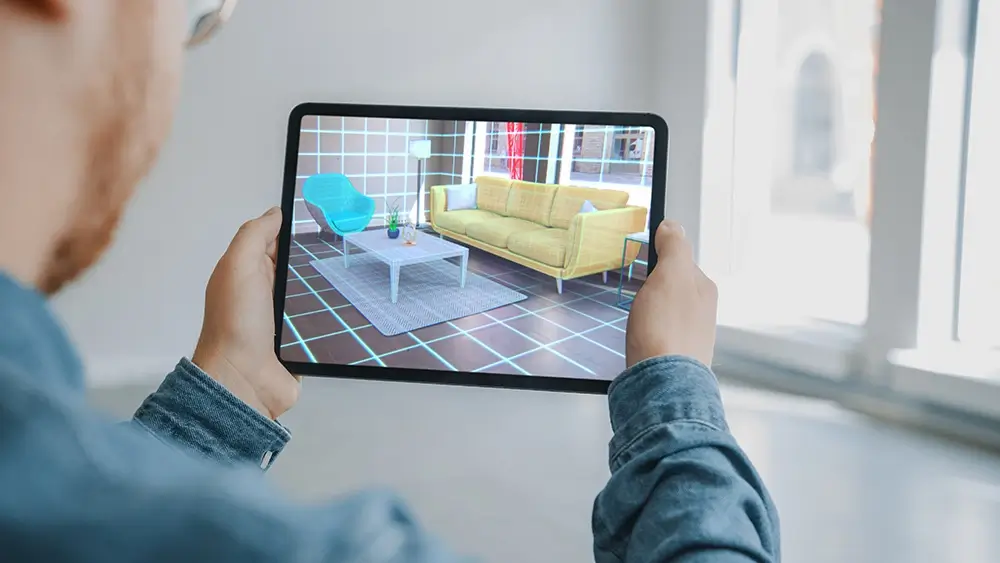
With these technologies, marketers can give customers insights into how the products fit into their lives. Customers are allowed to virtually try on products, visualize how items fit into their environment, or experience immersive shopping environments.
A notable example is virtual fitting rooms. AR is used to present personalized orders based on the exact size of customers and recommend the best option for them.
Mobile chatbots
Mobile chatbots have been recognized as one of the best ways to provide customer service and have been used widely on many eCommerce websites.
Despite its coverage for websites, chatbots are still not very common in the mobile world. While shopping online, having assistance through the purchasing journey is important to improve customer experiences. Moreover, with the push notification feature of mobile apps, the functionality of the chatbot can further be optimized. For this reason, the popularity of mobile business chatbots will continue to expand. And this makes it one of the critical developments in 2023 in mobile trade.
Voice shopping
Voice shopping might have been neglected by many shop owners in the old days, however, things will be quite different in 2023.
It is undoubted that the success of voice assistants like Siri, Google Assistant, and Amazon Alexa is widely recognized. Along with their steady growth throughout the years, customer behaviors in using voice search are also changing, from making basic queries such as looking for apps or asking for the weather, to searching for shopping items.
Slowly but steadily, voice search has now filtered into the eCommerce market. Shoppers use this technology to search before, during, and after they make a purchase. Interaction with brands can also be done using voice commands. By optimizing the voice search feature for your mobile apps, the purchasing process will be simplified, thus enhancing customer experiences.
Summary
In today’s market, the terms eCommerce and mCommerce are both quite common. However, the question of what is the difference between mCommerce and eCommerce is still unclear for many retailers.
Through this blog, we hope to provide you with a comprehensive view of the difference between these two platforms. While mobile commerce refers to the purchase and sale of goods via mobile devices such as smartphones and tablets, eCommerce allows retailers to not only sell their items in storefronts but also to reach a bigger audience on a local and worldwide scale with a more diverse product offering. The advancement of technology has made it possible for both eCommerce and mCommerce an excellent foundation to continue, grow, and shine.


